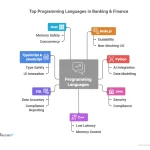
A bear market can be characterized by an extended downtrend. During this time, investors sell their stocks and buy them back at a lower price later. It can last for many months or even years. It is hard to gauge how long a bear market will last. It can be triggered by economic problems or recession, but in most cases, a bear market is only short-lived.
A bear market can occur for a number of reasons, from bad decisions by big players in the field to major issues in the economy. The low prices of stocks in a bear market will continue to attract investors. Over time, the bear market will transition back into a bull market. It is important to remember that the bear and bull markets always follow each other.
Understanding the differences between a bear market and a bull market can help you make more informed investment decisions. You’ll be able to buy securities at the right time based on your research. By comparing stocks and bond prices, you’ll be able to determine the most favorable time to invest in them.
When the market goes into a bear phase, the price of stocks plunges by about 20 percent. This can trigger economic pessimism and lower consumer spending. Many investors want to protect their savings during a bear market. However, the more money that is pulled out of the market, the further the prices fall.
When looking at a stock’s value, look at the price-to-earnings ratio. This ratio tells us how the company’s earnings have changed over time. If the P/E ratio has increased by 1% or more in a month, it is likely that the market will turn bearish in a few months.
Understanding the difference between a bear market and a bull market can help you avoid panic. While financial cycles are important, investors should always keep their main goals in mind when making investment decisions. In addition, a bear market is often characterized by a short-lived decline that can last a few months.
A bull market is characterized by rising stock prices. During a bull market, the price of stocks will increase by at least 20%. On the other hand, a bear market will fall by at least 20% from its recent peak. Inflation and recessions can influence a bear market.





